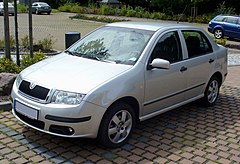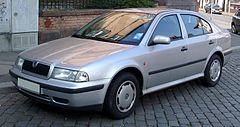Need some more companies folks.
At your command :3
Need some more companies folks.
SureWhat about space exploration/conquest companies in a spacewank timeline?
Virgo Publishing:
Virgo Publishing started in 1918, shortly following the end of World War I, in New York City, New York. They stared out publishing a magazine focusing on the then-new genre of science fiction, Strange Tales. They were working in something of a niche market, but, though clever marketing and a devoted fan base, managed to stay solvent throughout their first few years. They wouldn't become well-known until around 1927, when a young writer from nearby Providence by the name of HP Lovecraft started offering his work to them. They were initially skeptical, but a key executive, one Lee Scorbal, pushed hard for him, and the story was published by the end of the year. The story, known as "The Call of Cthulhu", was well-received, and lit the budgeting horror and sci-fi communities on fire. Soon, Scrobal would pull another key coup for the company: Namely, he managed to pitch, of all things, a film adaptation to MGM. The movie got only middling reviews, but did well enough at the box office to get MGM to continue the partnership. In 1932, for the first time, one of the films produced by Scrobal earned an Oscar nomination, and won in 1934. The publisher had a steady revenue stream set up, and, soon, they began expanding, working with Lovecraft's inner circle, mining them for ideas. Lovecraft, more financially and mentally stable then in our world, passed away in 1945. By that point, Virgo was becoming a major publisher, both of short stories and of full novels in the horror and science fiction genres. Thus it was that, in 1945, Virg bought out a small but quickly-growing company by the name of DC Comics. In addition to their standard superhero comics, DC began filling their line-up with horror and sci-fi comics, some scripted by the greatest writers of their day. DC managed to hold on for a decade until superheroes saw a sudden revival under the editorial of Julius Schwartz in 1956. That same year, DC merged with a company called Atlas Comics, creating the famous trio of Jack Kirby, Stan Lee, and Joe Simon. Though superheroes aren't all of the comic book medium, they still hold the majority of it, and their competition with Fawcett Comics, owned by the Disney corporation, remains strong. Virgo worked with many of the greatest writers in the genre of speculative fiction, many of whom lived longer and were vastly more profitable than IOTL. Robert E. Howard, H. Beam Piper, Randall Garrett, Robert Heinlein, and Isaac Asimov are only a few of the many prominent names that got their start working for Virgo. They've produced many movies based on their work, and have even produced original movies, such as the Star Wars series, directed by Geraldine Lucas and home to Feminist icon Luka Starkiller, as well as a major milestone for interracial relationships in film, courtesy Billy Dee Williams as Hawk Solo. They are the largest publisher specializing in speculative fiction, their production studio broke 7 billion in gross last year, and everyone who's anyone in sci-fi has worked with them. They've done work in just about every form of media.[/QUOQUOT
Superman and the Incredible Hulk Vs Cthullhu?
That's good for now. Save them for your alternate railroads threadAnyone want to hear more railroads?
OK. I linked that here right?That's good for now. Save them for your alternate railroads thread

F'ing brilliant.Ples Planus Company (1917)
Today all good mothers are singing I didn't raise my Baby Boy to be a Soldier.
Are you a good mother!
- The Ples Planus Company can guarantee your boy will never have to be a soldier and fight in a foreign war.
- Our revolutionary shoe design separates the talus bone from the navicular bone and ensures flat feet.
- Designed in our modern laboratories by 100 prominent scientists, our patent pending Pes Planus Child’s Boot© will ensure complete flat footedness by the age of 14 or your money back.
- Made with the finest Nubcuk Sueded Grain leather, not only will your boy be safe from Selective Service Act but by wearing his stylish Ples Planus footwear he will be the envy of all his friends.
Colors Included: Brown, Dark Brown, Black (When ordering, be sure to specify desired color and approximate shoe size.)
All legal currencies negotiated cash, check, or federal postage stamps accepted. Allow four weeks for delivery.
Don’t hesitate The Hun is coming; protect your baby boy today.
All good mothers today are protecting their little boys with the Pes Planus Child's Boot©, are you a good mother?












